One year ago today (September 1, 2012) I committed to posting daily articles on my other blog This Day in Water History. It turned into quite an effort–much more so that I ever thought. Along the way, I learned (along with you, dear readers) a lot about water history. Below, I have summarized some of the most informative posts from the past year. I hope that you enjoy them.
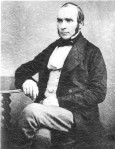 September 7, 1854: The St. James Board of Governors and Directors of the Poor was convinced by Dr. John Snow that the Broad Street pump was the source of a cholera epidemic in a London neighborhood. The Board ordered the removal of the pump handle preventing a continuation of the epidemic. Incredibly, public protests resulted in the replacement of the pump handle on September 26, 1855.
September 7, 1854: The St. James Board of Governors and Directors of the Poor was convinced by Dr. John Snow that the Broad Street pump was the source of a cholera epidemic in a London neighborhood. The Board ordered the removal of the pump handle preventing a continuation of the epidemic. Incredibly, public protests resulted in the replacement of the pump handle on September 26, 1855.
 September 26, 1908: First day of operation of the chlorination facility at Boonton Reservoir for Jersey City, NJ. This was the first continuous use of chlorine in the U.S. for drinking water disinfection. Dr. John L. Leal was responsible for this breakthrough in public health. Details of the facility planning and operation are included in The Chlorine Revolution: Water Disinfection and the Fight to Save Lives.
September 26, 1908: First day of operation of the chlorination facility at Boonton Reservoir for Jersey City, NJ. This was the first continuous use of chlorine in the U.S. for drinking water disinfection. Dr. John L. Leal was responsible for this breakthrough in public health. Details of the facility planning and operation are included in The Chlorine Revolution: Water Disinfection and the Fight to Save Lives.
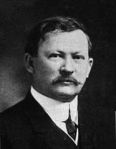 October 21, 1914: The first numerical drinking water regulations in the U.S. were adopted. “On October 21, 1914, pursuant to the recommendation of the Surgeon General of the Public Health Service [Dr. Rupert Blue], the Treasury Department adopted the first standards for drinking water supplied to the public by any common carrier engaged in interstate commerce. These standards specified the maximum permissible limits of bacteriological impurity…
October 21, 1914: The first numerical drinking water regulations in the U.S. were adopted. “On October 21, 1914, pursuant to the recommendation of the Surgeon General of the Public Health Service [Dr. Rupert Blue], the Treasury Department adopted the first standards for drinking water supplied to the public by any common carrier engaged in interstate commerce. These standards specified the maximum permissible limits of bacteriological impurity…
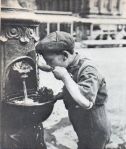 October 30, 1912: 100th Anniversary of the Regulation Banning the Common Cup. At the turn of the 20th century, public health professionals were still struggling to incorporate the precepts of the germ theory into all of their protocols. The general population was even further behind and, in many cases, resisted the momentum for change. One popular custom during this period was the use of a single cup or dipper for a pail of water or water cooler aboard trains—the common cup. Disease transmission as a result of using a common cup in public places was a serious problem…
October 30, 1912: 100th Anniversary of the Regulation Banning the Common Cup. At the turn of the 20th century, public health professionals were still struggling to incorporate the precepts of the germ theory into all of their protocols. The general population was even further behind and, in many cases, resisted the momentum for change. One popular custom during this period was the use of a single cup or dipper for a pail of water or water cooler aboard trains—the common cup. Disease transmission as a result of using a common cup in public places was a serious problem…
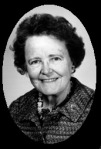 November 26, 1907: 105th Birthday of Dr. Ruth Patrick. “Dr. Ruth Myrtle Patrick (born November 26, 1907) is a botanist and limnologist specializing in diatoms and freshwater ecology, who developed ways to measure the health of freshwater ecosystems and established a number of research facilities. Dr. Patrick’s research in fossilized diatoms showed that the Great Dismal Swamp between Virginia and North Carolina was once a forest, which had been flooded by seawater. Similar research proved that the Great Salt Lake was not always a saline lake.
November 26, 1907: 105th Birthday of Dr. Ruth Patrick. “Dr. Ruth Myrtle Patrick (born November 26, 1907) is a botanist and limnologist specializing in diatoms and freshwater ecology, who developed ways to measure the health of freshwater ecosystems and established a number of research facilities. Dr. Patrick’s research in fossilized diatoms showed that the Great Dismal Swamp between Virginia and North Carolina was once a forest, which had been flooded by seawater. Similar research proved that the Great Salt Lake was not always a saline lake.
 December 3, 1842: Ellen Swallow Richards was born. “Ellen Swallow Richards is perhaps best known as MIT’s first female graduate and instructor, but launching coeducation at the Institute is merely the first in a long list of her pioneering feats. The breadth and depth of her career are astounding; a 1910 tribute in La Follette’s Weekly Magazine professed that ‘when one attempts to tell of the enterprises, apart from her formal teaching, of which Mrs. Richards has been a part or the whole, he is lost in a bewildering maze.’ Authors and scholars have called her the founder of ecology, the first female environmental engineer, and the founder of home economics.
December 3, 1842: Ellen Swallow Richards was born. “Ellen Swallow Richards is perhaps best known as MIT’s first female graduate and instructor, but launching coeducation at the Institute is merely the first in a long list of her pioneering feats. The breadth and depth of her career are astounding; a 1910 tribute in La Follette’s Weekly Magazine professed that ‘when one attempts to tell of the enterprises, apart from her formal teaching, of which Mrs. Richards has been a part or the whole, he is lost in a bewildering maze.’ Authors and scholars have called her the founder of ecology, the first female environmental engineer, and the founder of home economics.
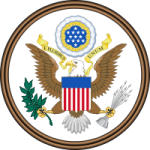 December 16, 1974: Safe Drinking Water Act signed into law by President Ford. “The Safe Drinking Water Act (SDWA) is the principal federal law in the United States intended to ensure safe drinking water for the public. Pursuant to the act, the Environmental Protection Agency (EPA) is required to set standards for drinking water quality and oversee all states, localities, and water suppliers who implement these standards.
December 16, 1974: Safe Drinking Water Act signed into law by President Ford. “The Safe Drinking Water Act (SDWA) is the principal federal law in the United States intended to ensure safe drinking water for the public. Pursuant to the act, the Environmental Protection Agency (EPA) is required to set standards for drinking water quality and oversee all states, localities, and water suppliers who implement these standards.
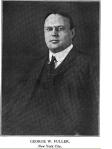 December 21, 1868: George Warren Fuller is born in Franklin, Massachusetts. George Warren Fuller was, quite simply, the greatest sanitary engineer of his time, and his time was long—lasting from 1895 to 1934. In truth, we have not seen his like since. How did he reach the pinnacle of his field? What early influences led him on his path? There is a biography of Fuller on Wikipedia that I wrote which summarizes his life from a “neutral point of view.” The material below is taken in part from Chapter 7 of The Chlorine Revolution: Water Disinfection and the Fight To Save Lives. By design, it gives more of a personal flavor to his life.
December 21, 1868: George Warren Fuller is born in Franklin, Massachusetts. George Warren Fuller was, quite simply, the greatest sanitary engineer of his time, and his time was long—lasting from 1895 to 1934. In truth, we have not seen his like since. How did he reach the pinnacle of his field? What early influences led him on his path? There is a biography of Fuller on Wikipedia that I wrote which summarizes his life from a “neutral point of view.” The material below is taken in part from Chapter 7 of The Chlorine Revolution: Water Disinfection and the Fight To Save Lives. By design, it gives more of a personal flavor to his life.
 January 2, 1900: On January 2, 1900, the City of Chicago opened up an earthen dam that isolated the Chicago Drainage Canal and forced the Chicago River to reverse its course and discharge into the Mississippi River 43 miles above the intake for the water supply of St. Louis, Missouri.(Hill 2000) The total travel distance for the sewage from its generation to St. Louis intake was about 357 miles. Missouri sued Illinois to plug the connection to the Mississippi River, also called the Sanitary and Ship Canal, which they claimed was contaminating the St. Louis water supply and increasing the incidence of typhoid fever in that community.
January 2, 1900: On January 2, 1900, the City of Chicago opened up an earthen dam that isolated the Chicago Drainage Canal and forced the Chicago River to reverse its course and discharge into the Mississippi River 43 miles above the intake for the water supply of St. Louis, Missouri.(Hill 2000) The total travel distance for the sewage from its generation to St. Louis intake was about 357 miles. Missouri sued Illinois to plug the connection to the Mississippi River, also called the Sanitary and Ship Canal, which they claimed was contaminating the St. Louis water supply and increasing the incidence of typhoid fever in that community.
 January 6, 1875: Birth of Harriette Chick. “Dr. Dame Harriette Chick, DBE (6 January 1875 – 9 July 1977) was a notable British protein scientist and nutritionist. She developed the first relationship showing bacterial kill as a function of disinfectant concentration and contact time. She postulated that the microbial mortality would follow what in physical chemistry would be called ‘first-order kinetics’—that is, mortality vs time data plots as a straight line on a semi-logarithmic graph. In practice, her postulate was correct and the law works for all liquid disinfectants and for many sterilization processes (for example, Chick’s Law has evolved into what is now referred to as D-value in autoclave sterilization).
January 6, 1875: Birth of Harriette Chick. “Dr. Dame Harriette Chick, DBE (6 January 1875 – 9 July 1977) was a notable British protein scientist and nutritionist. She developed the first relationship showing bacterial kill as a function of disinfectant concentration and contact time. She postulated that the microbial mortality would follow what in physical chemistry would be called ‘first-order kinetics’—that is, mortality vs time data plots as a straight line on a semi-logarithmic graph. In practice, her postulate was correct and the law works for all liquid disinfectants and for many sterilization processes (for example, Chick’s Law has evolved into what is now referred to as D-value in autoclave sterilization).
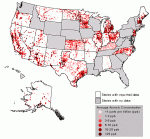 January 22, 2001: Final Rule for Arsenic in Drinking Water. “Today’s final rule revises the current Maximum Contaminant Level (MCL) from 50 µg/L to 10 µg/L and sets a Maximum Contaminant Level Goal (MCLG) of zero for arsenic in drinking water. In addition, this final rule also clarifies how compliance is demonstrated for many inorganic and organic contaminants in drinking water…. Both community water systems (CWSs) and non-transient, non-community water systems (NTNCWSs) will be required to reduce the arsenic concentration in their drinking water systems to 10 µg/L….
January 22, 2001: Final Rule for Arsenic in Drinking Water. “Today’s final rule revises the current Maximum Contaminant Level (MCL) from 50 µg/L to 10 µg/L and sets a Maximum Contaminant Level Goal (MCLG) of zero for arsenic in drinking water. In addition, this final rule also clarifies how compliance is demonstrated for many inorganic and organic contaminants in drinking water…. Both community water systems (CWSs) and non-transient, non-community water systems (NTNCWSs) will be required to reduce the arsenic concentration in their drinking water systems to 10 µg/L….
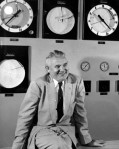 February 6, 1905: Birth of Samuel S. Baxter in Philadelphia. Sam Baxter was the long-time Commissioner of the Philadelphia Water Department. With the exception of military service during World War II, Sam Baxter spent his entire life living and working in Philadelphia. He was an individual of exemplary ability, character, and charm. The roll of his accomplishments is long and enviable, but perhaps his most lasting and memorable legacy was his rare personal qualities. Sam Baxter was truly a public works “man for all seasons,” who, in the conduct of his professional and personal life, served as a paradigm for other engineer-administrators.
February 6, 1905: Birth of Samuel S. Baxter in Philadelphia. Sam Baxter was the long-time Commissioner of the Philadelphia Water Department. With the exception of military service during World War II, Sam Baxter spent his entire life living and working in Philadelphia. He was an individual of exemplary ability, character, and charm. The roll of his accomplishments is long and enviable, but perhaps his most lasting and memorable legacy was his rare personal qualities. Sam Baxter was truly a public works “man for all seasons,” who, in the conduct of his professional and personal life, served as a paradigm for other engineer-administrators.
 February 10, 1990: New York Times headline– Perrier Recalls Its Water in U.S. After Benzene Is Found in Bottles. by George James “The company that made bottled mineral water chic is voluntarily recalling its entire inventory of Perrier from store shelves throughout the United States after tests showed the presence of the chemical benzene in a small sample of bottles. The impurity was discovered in North Carolina by county officials who so prized the purity of Perrier that they used it as a standard in tests of other water supplies.
February 10, 1990: New York Times headline– Perrier Recalls Its Water in U.S. After Benzene Is Found in Bottles. by George James “The company that made bottled mineral water chic is voluntarily recalling its entire inventory of Perrier from store shelves throughout the United States after tests showed the presence of the chemical benzene in a small sample of bottles. The impurity was discovered in North Carolina by county officials who so prized the purity of Perrier that they used it as a standard in tests of other water supplies.
 February 24, 1953: Birth of Pat Mulroy. Patricia Mulroy is the general manager of the Southern Nevada Water Authority. Her job is to make sure that Las Vegas and the surrounding metropolitan area has enough water, now and in the future. Because Las Vegas has one of the lowest priorities of water rights on the Colorado River, her tenure has been marked by some of the most innovative efforts to increase the region’s water supply and revolutionary ideas to conserve water. She has gone way beyond the usual approaches of low flow showerheads and low flush toilets. The Authority’s program to buy back turf grass in people’s yards at a price of up to two dollars a square foot has been called by some as a historic turning point in the war against municipal water over-use in the arid West.
February 24, 1953: Birth of Pat Mulroy. Patricia Mulroy is the general manager of the Southern Nevada Water Authority. Her job is to make sure that Las Vegas and the surrounding metropolitan area has enough water, now and in the future. Because Las Vegas has one of the lowest priorities of water rights on the Colorado River, her tenure has been marked by some of the most innovative efforts to increase the region’s water supply and revolutionary ideas to conserve water. She has gone way beyond the usual approaches of low flow showerheads and low flush toilets. The Authority’s program to buy back turf grass in people’s yards at a price of up to two dollars a square foot has been called by some as a historic turning point in the war against municipal water over-use in the arid West.
 March 1, 1993: Outbreak of cryptosporidiosis in Milwaukee, WI. From this date until April 28 is generally regarded as the duration of the outbreak of the disease. People in the area receiving the water began getting sick during this period and soon emergency rooms and doctors’ offices were overtaxed. It has been estimated that over 400,000 people were sickened and over 100 people died. One estimate puts the total cost of outbreak-associated illness as $96.2 million: $31.7 million in medical costs and $64.6 million in productivity losses.
March 1, 1993: Outbreak of cryptosporidiosis in Milwaukee, WI. From this date until April 28 is generally regarded as the duration of the outbreak of the disease. People in the area receiving the water began getting sick during this period and soon emergency rooms and doctors’ offices were overtaxed. It has been estimated that over 400,000 people were sickened and over 100 people died. One estimate puts the total cost of outbreak-associated illness as $96.2 million: $31.7 million in medical costs and $64.6 million in productivity losses.
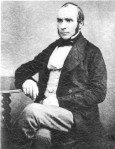 March 15, 1813: Birth of John Snow. Dr. John Snow (March 15, 1813–June 16, 1858) is famous for the Broad Street Pump episode but he accomplished so much more than that. He was first and foremost a physician who trained in England in the early part of the 19th century. He made significant contributions to the development of anesthesia and he is considered by many to be the Father of Modern Epidemiology. The story of Dr. John Snow and how he discovered the cause of a cholera epidemic in the Golden Square neighborhood of London in 1854 has reached almost mythical proportions in public health literature. Three excellent books describe Snow’s life and the details of the Broad Street Pump incident. (Hempel 2007; Johnson 2006; Vinten-Johansen et al. 2003)
March 15, 1813: Birth of John Snow. Dr. John Snow (March 15, 1813–June 16, 1858) is famous for the Broad Street Pump episode but he accomplished so much more than that. He was first and foremost a physician who trained in England in the early part of the 19th century. He made significant contributions to the development of anesthesia and he is considered by many to be the Father of Modern Epidemiology. The story of Dr. John Snow and how he discovered the cause of a cholera epidemic in the Golden Square neighborhood of London in 1854 has reached almost mythical proportions in public health literature. Three excellent books describe Snow’s life and the details of the Broad Street Pump incident. (Hempel 2007; Johnson 2006; Vinten-Johansen et al. 2003)
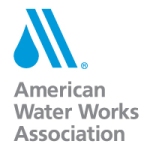 March 29, 1881: AWWA founded. “On March 29, 1881, in Engineers’ Hall on the campus of Washington University in St. Louis, Mo., 22 men representing water utilities in Illinois, Indiana, Iowa, Kansas, Kentucky, and Tennessee founded the American Water Works Association. They adopted a constitution that stated the purpose of the association as being “for the exchange of information pertaining to the management of water-works, for the mutual advancement of consumers and water companies, and for the purpose of securing economy and uniformity in the operations of water-works.”
March 29, 1881: AWWA founded. “On March 29, 1881, in Engineers’ Hall on the campus of Washington University in St. Louis, Mo., 22 men representing water utilities in Illinois, Indiana, Iowa, Kansas, Kentucky, and Tennessee founded the American Water Works Association. They adopted a constitution that stated the purpose of the association as being “for the exchange of information pertaining to the management of water-works, for the mutual advancement of consumers and water companies, and for the purpose of securing economy and uniformity in the operations of water-works.”
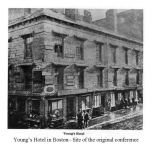 April 19, 1882: First meeting of the New England Water Works Association. In an informal meeting between Horace G. Holden, Superintendent of the Lowell MA works, Frank E. Hall, the Worcester Superintendent and Robert C. P. Coggeshall, the New Bedford Superintendent, a decision was made to pursue the idea of a New England organization. The first meeting was held at Young’s Hotel in Boston on April 19, 1882. Attending were representatives from the following communities: From Massachusetts-Fitchburg, Springfield, Worcester, Fall River, Brockton, Plymouth, Lawrence, Cambridge, Lowell, Leominster, Malden, Medford, Salem, New Bedford; From Connecticut-New Haven; From Rhode Island-Pawtucket; From New Hampshire-Manchester.
April 19, 1882: First meeting of the New England Water Works Association. In an informal meeting between Horace G. Holden, Superintendent of the Lowell MA works, Frank E. Hall, the Worcester Superintendent and Robert C. P. Coggeshall, the New Bedford Superintendent, a decision was made to pursue the idea of a New England organization. The first meeting was held at Young’s Hotel in Boston on April 19, 1882. Attending were representatives from the following communities: From Massachusetts-Fitchburg, Springfield, Worcester, Fall River, Brockton, Plymouth, Lawrence, Cambridge, Lowell, Leominster, Malden, Medford, Salem, New Bedford; From Connecticut-New Haven; From Rhode Island-Pawtucket; From New Hampshire-Manchester.
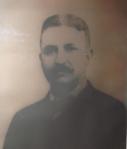 May 5, 1858: 155th anniversary of the birth of John L. Leal, physician and water treatment expert who pioneered chlorine disinfection in the U.S. John L. Leal was not a physically imposing figure. Photographs of him show a man of average height and build with a kind face. Nothing in his appearance hinted at the steel spine and dogged courage that he possessed. There are many unsung heroes who contributed significantly to public health at the turn of the 20th century. John L. Leal is one of them and after reading this blog post, I think you will agree that he did more than most to save people’s lives.
May 5, 1858: 155th anniversary of the birth of John L. Leal, physician and water treatment expert who pioneered chlorine disinfection in the U.S. John L. Leal was not a physically imposing figure. Photographs of him show a man of average height and build with a kind face. Nothing in his appearance hinted at the steel spine and dogged courage that he possessed. There are many unsung heroes who contributed significantly to public health at the turn of the 20th century. John L. Leal is one of them and after reading this blog post, I think you will agree that he did more than most to save people’s lives.
 May 25, 1907: Birth of Rachel Carson. Biologist and author of Silent Spring, The Sea Wind and other non-fiction work intended to improve the public understanding of science, Carson became a leading figure in the environmental movement before her death in 1964. Late in the 1950s, Carson turned her attention to conservation, especially environmental problems that she believed were caused by synthetic pesticides. The result was Silent Spring (1962), which brought environmental concerns to an unprecedented share of the American people.
May 25, 1907: Birth of Rachel Carson. Biologist and author of Silent Spring, The Sea Wind and other non-fiction work intended to improve the public understanding of science, Carson became a leading figure in the environmental movement before her death in 1964. Late in the 1950s, Carson turned her attention to conservation, especially environmental problems that she believed were caused by synthetic pesticides. The result was Silent Spring (1962), which brought environmental concerns to an unprecedented share of the American people.
 June 7, 1991: In 1991, EPA published the Lead and Copper Rule to minimize lead and copper in drinking water. The rule replaced the previous standard of 50 ppb, measured at the entry point to the distribution system. The rule established a maximum contaminant level goal (MCLG) of zero for lead in drinking water and a treatment technique to reduce corrosion within the distribution system….Lead and copper enter drinking water primarily through plumbing materials. Exposure to lead and copper may cause health problems ranging from stomach distress to brain damage. On June 7, 1991, EPA published a regulation to control lead and copper in drinking water. This regulation is known as the Lead and Copper Rule (also referred to as the LCR or 1991 Rule).
June 7, 1991: In 1991, EPA published the Lead and Copper Rule to minimize lead and copper in drinking water. The rule replaced the previous standard of 50 ppb, measured at the entry point to the distribution system. The rule established a maximum contaminant level goal (MCLG) of zero for lead in drinking water and a treatment technique to reduce corrosion within the distribution system….Lead and copper enter drinking water primarily through plumbing materials. Exposure to lead and copper may cause health problems ranging from stomach distress to brain damage. On June 7, 1991, EPA published a regulation to control lead and copper in drinking water. This regulation is known as the Lead and Copper Rule (also referred to as the LCR or 1991 Rule).
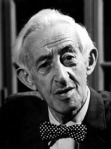 June 10, 1892: Birth of Abel Wolman. Abel Wolman (June 10, 1892 – February 22, 1989) was an American inventor, scientist, professor and pioneer of modern sanitary engineering. Wolman taught for many years on the faculty of Johns Hopkins University, where he established the Department of Sanitary Engineering in 1937. He served as the department’s chairman until his official retirement in 1962. Wolman became Editor of the American Water Works Association’s Journal AWWA in 1919 and was responsible for making it into a monthly publication in 1924. The Association presents the Abel Wolman Award of Excellence each year to recognize those whose careers in the water works industry exemplify vision, creativity, and excellent professional performance characteristic of Wolman’s long and productive career.
June 10, 1892: Birth of Abel Wolman. Abel Wolman (June 10, 1892 – February 22, 1989) was an American inventor, scientist, professor and pioneer of modern sanitary engineering. Wolman taught for many years on the faculty of Johns Hopkins University, where he established the Department of Sanitary Engineering in 1937. He served as the department’s chairman until his official retirement in 1962. Wolman became Editor of the American Water Works Association’s Journal AWWA in 1919 and was responsible for making it into a monthly publication in 1924. The Association presents the Abel Wolman Award of Excellence each year to recognize those whose careers in the water works industry exemplify vision, creativity, and excellent professional performance characteristic of Wolman’s long and productive career.
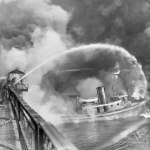 June 22, 1969: The June 22, 1969 fire on the Cuyahoga is the “seminal” event in the history of water pollution control in America, helping to spur the growth of the environmental movement and the passage of national environmental legislation. “Never before had an image so thoroughly driven home the deteriorating plight of our nation’s waterways,” one environmental group explained on the fire’s thirtieth anniversary. “The burning river mobilized the nation and became a rallying point for passage of the Clean Water Act.” Despite its national importance as a symbol of environmental decline, the 1969 fire on the Cuyahoga was a relatively minor story in Cleveland at the time.
June 22, 1969: The June 22, 1969 fire on the Cuyahoga is the “seminal” event in the history of water pollution control in America, helping to spur the growth of the environmental movement and the passage of national environmental legislation. “Never before had an image so thoroughly driven home the deteriorating plight of our nation’s waterways,” one environmental group explained on the fire’s thirtieth anniversary. “The burning river mobilized the nation and became a rallying point for passage of the Clean Water Act.” Despite its national importance as a symbol of environmental decline, the 1969 fire on the Cuyahoga was a relatively minor story in Cleveland at the time.
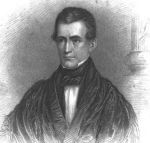 July 4, 1832: Date of letter from Chester Averill (Professor of Chemistry, Union College) to the Mayor of Schenectady, New York during the middle of a cholera epidemic which praised the disinfecting properties of chloride of lime (chlorine). The treatise quoted many learned men of the time who demonstrated that chloride of lime eliminated the spread of contagious diseases by attacking the miasmas associated with them. The letter also made reference to the destruction of certain “viruses” that may have been responsible for transmission of the diseases.
July 4, 1832: Date of letter from Chester Averill (Professor of Chemistry, Union College) to the Mayor of Schenectady, New York during the middle of a cholera epidemic which praised the disinfecting properties of chloride of lime (chlorine). The treatise quoted many learned men of the time who demonstrated that chloride of lime eliminated the spread of contagious diseases by attacking the miasmas associated with them. The letter also made reference to the destruction of certain “viruses” that may have been responsible for transmission of the diseases.
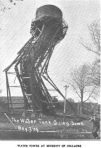 July 7, 1909: Municipal Journal and Engineer article. A Defective Water Tower. A water tank at Vermilion, S. D., which had for some time been known to be weak, fell a few weeks ago and the photograph of this shows very plainly the point of weakness. The tank was 20 feet in diameter and 16 feet high and rested upon a tower 100 feet high. As seen by the illustration, all of the legs or posts broke at one point; so readily, in fact, that the whole structure folded up like a jack-knife and the tank with its contents of water fell almost directly onto the center of the foundation. The tank itself remained intact until striking the ground, when it burst and was completely shattered.
July 7, 1909: Municipal Journal and Engineer article. A Defective Water Tower. A water tank at Vermilion, S. D., which had for some time been known to be weak, fell a few weeks ago and the photograph of this shows very plainly the point of weakness. The tank was 20 feet in diameter and 16 feet high and rested upon a tower 100 feet high. As seen by the illustration, all of the legs or posts broke at one point; so readily, in fact, that the whole structure folded up like a jack-knife and the tank with its contents of water fell almost directly onto the center of the foundation. The tank itself remained intact until striking the ground, when it burst and was completely shattered.
 July 27, 1976: Outbreak of Legionnaires’ Disease in Philadelphia. “On July 21, 1976, the American Legion opened its annual three-day convention at the Bellevue-Stratford Hotel in Philadelphia, Pennsylvania. On July 27, three days after the convention ended, Legionnaire Ray Brennan, a 61-year-old retired Air Force captain and an American Legion bookkeeper, died at his home of an apparent heart attack. Within a week, more than 130 people, mostly men, had been hospitalized, and 25 had died.
July 27, 1976: Outbreak of Legionnaires’ Disease in Philadelphia. “On July 21, 1976, the American Legion opened its annual three-day convention at the Bellevue-Stratford Hotel in Philadelphia, Pennsylvania. On July 27, three days after the convention ended, Legionnaire Ray Brennan, a 61-year-old retired Air Force captain and an American Legion bookkeeper, died at his home of an apparent heart attack. Within a week, more than 130 people, mostly men, had been hospitalized, and 25 had died.
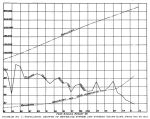 August 14, 1913: Municipal Journal article. Effect of Sewerage Upon Health. “Although nearly all intelligent people will to-day agree that there is great value in a comprehensive sewer system, it is not always easy to demonstrate in particular cases all the advantages gained by its installation. A system for the drainage of storm water in a city is not only a convenience but is a valuable asset because, by preventing damage from flooding in storms, it increases the value of property. In a system of sanitary sewers, the beneficial results are convenience in the disposal of household wastes, a saving in the expense of repeated emptying of cesspools, and above all the resulting improvement in the public health.
August 14, 1913: Municipal Journal article. Effect of Sewerage Upon Health. “Although nearly all intelligent people will to-day agree that there is great value in a comprehensive sewer system, it is not always easy to demonstrate in particular cases all the advantages gained by its installation. A system for the drainage of storm water in a city is not only a convenience but is a valuable asset because, by preventing damage from flooding in storms, it increases the value of property. In a system of sanitary sewers, the beneficial results are convenience in the disposal of household wastes, a saving in the expense of repeated emptying of cesspools, and above all the resulting improvement in the public health.
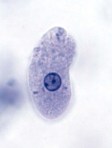 August 16, 1933: First day of amoebic dysentery outbreak at the Chicago World’s Fair. American Journal of Public Health editorial. The cause of the outbreak was sewage contamination of the drinking water at two hotels. in the City. It must be remembered that very few of these cases occurred in Chicago, two having been reported on August 16, the date which the authorities fixed as the beginning of the outbreak. Owing to the period of incubation, which has been fixed by several observers on epidemiological evidence as from 12 to 30 days for the majority of cases, and even longer for others, visitors had arrived home in Canada and various parts of the United States before being taken sick. Various diagnoses, such as appendicitis, colitis, ulcerative colitis, etc., were made. Up to January 24, 1934, 721 clinical cases of amebic dysentery in 206 cities have been found and traced to Chicago, in addition to which, 1,049 carriers have been found in Chicago. A total of 98 deaths were attributed to the outbreak.
August 16, 1933: First day of amoebic dysentery outbreak at the Chicago World’s Fair. American Journal of Public Health editorial. The cause of the outbreak was sewage contamination of the drinking water at two hotels. in the City. It must be remembered that very few of these cases occurred in Chicago, two having been reported on August 16, the date which the authorities fixed as the beginning of the outbreak. Owing to the period of incubation, which has been fixed by several observers on epidemiological evidence as from 12 to 30 days for the majority of cases, and even longer for others, visitors had arrived home in Canada and various parts of the United States before being taken sick. Various diagnoses, such as appendicitis, colitis, ulcerative colitis, etc., were made. Up to January 24, 1934, 721 clinical cases of amebic dysentery in 206 cities have been found and traced to Chicago, in addition to which, 1,049 carriers have been found in Chicago. A total of 98 deaths were attributed to the outbreak.
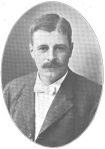 August 28, 1869: Birth of Allen Hazen. “Allen Hazen (1869–1930) was an expert in hydraulics, flood control, water purification and sewage treatment. His career extended from 1888 to 1930 and he is, perhaps, best known for his contributions to hydraulics with the Hazen-Williams equation. Hazen published some of the seminal works on sedimentation and filtration. He was President of the New England Water Works Association and Vice President of the American Society of Civil Engineers.
August 28, 1869: Birth of Allen Hazen. “Allen Hazen (1869–1930) was an expert in hydraulics, flood control, water purification and sewage treatment. His career extended from 1888 to 1930 and he is, perhaps, best known for his contributions to hydraulics with the Hazen-Williams equation. Hazen published some of the seminal works on sedimentation and filtration. He was President of the New England Water Works Association and Vice President of the American Society of Civil Engineers.



